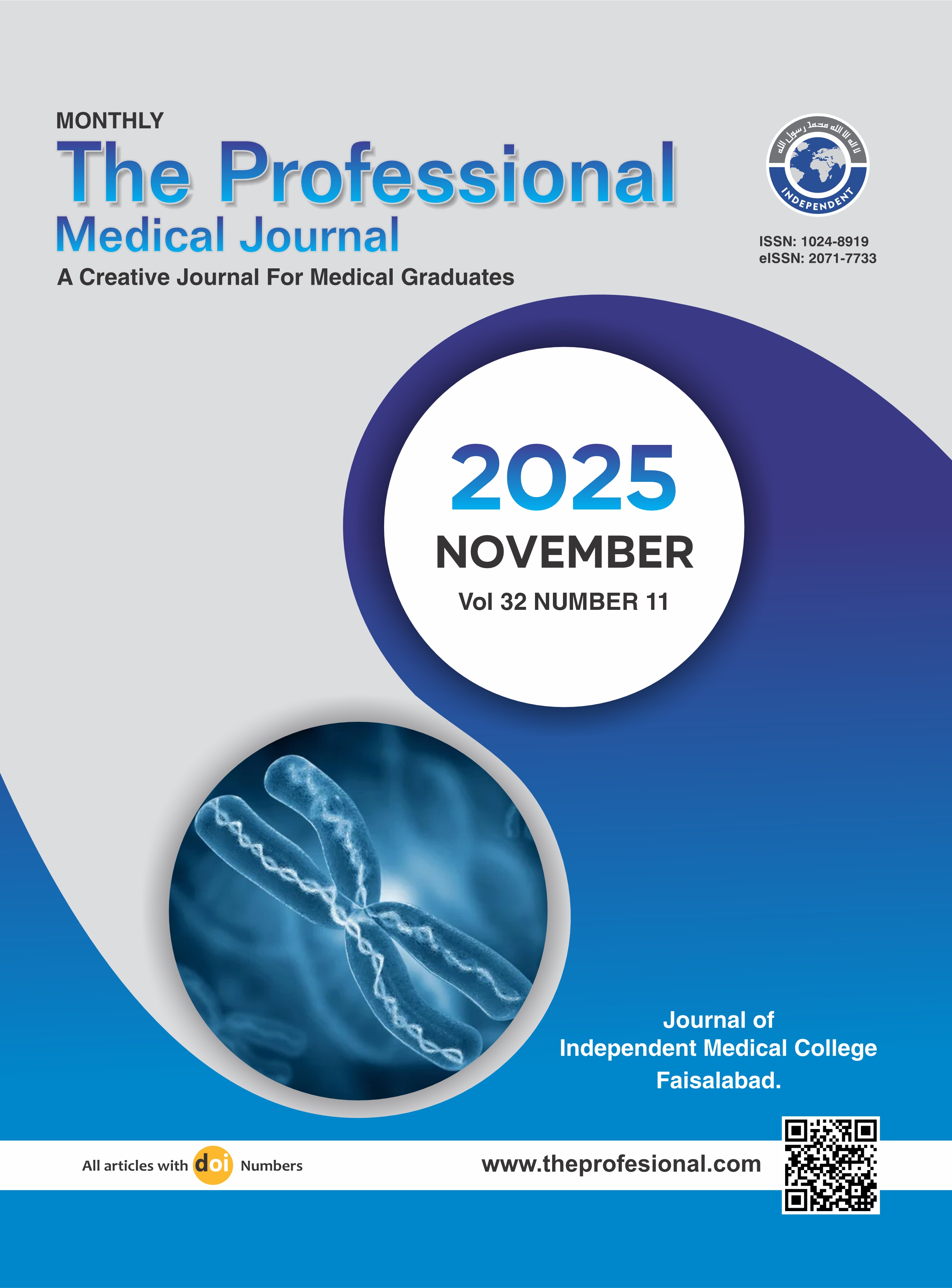Women with postpartum hemorrhage at a tertiary care hospital: Frequency, risk factors, and clinical outcomes.
DOI:
https://doi.org/10.29309/TPMJ/2025.32.11.9712Keywords:
Clinical Outcome, Post-partum Hemorrhage, Uterine AtonyAbstract
Objective: To record the outcomes of postpartum hemorrhage for mothers, as well as to investigate the prevalence, factors that are susceptible to causing PPH, and clinical outcomes of PPH. Study Design: Retrospective study. Setting: Department of OBG, MTI Hayatabad Medical Complex, Peshawar. Period: January 2023 to December 2023. Methods: The study encompassed all the women who experienced postpartum hemorrhage ensuing birth in the labor unit, however patients with an erstwhile history of bleeding disorders and those taking “Warfarin” were excluded from the study. Relevant data of patients who suffered from PPH during the study period was obtained from the medical records of the unit, reviewed, and analyzed to obtain the required frequencies and sort the risk factors. Results: The frequency of postpartum hemorrhage among the 6235 patients was 3.61% (n=225). Out of 225 PPH cases, the primary PPH occurred in 215 (95.11%) cases while 10 (4.89%) patients suffered from secondary PPH. The mean age of the women was 28.26 years (SD ±5.84). The principal causes of PPH were uterine atony, RPOCs, and Trauma / perineal and vaginal tears accounting for 173 (76.89%), 27 (12.00%), and 21 (9.33%) cases respectively. Conclusion: Uterine atony was found to be the leading cause of PPH, followed by RPOCs and perineal and vaginal tears. Un-booked patients were found to be more vulnerable to PPH. To prevent PPH, it is important to assess risk factors, and actively manage the 3rd stage of labor.
Downloads
Published
Issue
Section
License
Copyright (c) 2025 The Professional Medical Journal

This work is licensed under a Creative Commons Attribution-NonCommercial 4.0 International License.


